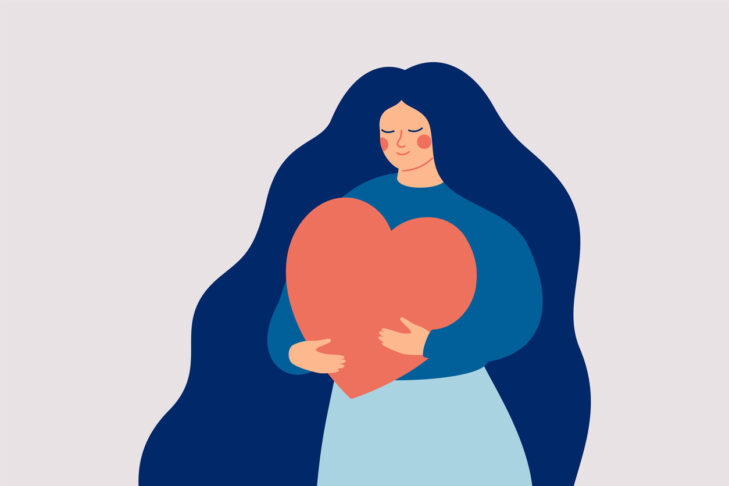Combating mental illness has been a hot-button topic as of late, especially considering the effects of long-term isolation and stress that many of us have experienced as a result of the pandemic. Since May is Mental Health Awareness Month, I sat down with M (name has been omitted for privacy), a Jewish convert who was diagnosed with schizoaffective disorder as a teenager.
To some of us, schizophrenia and schizophrenia spectrum disorders immediately set off warning bells. We imagine characters from films and TV brandishing weapons, their delusions and hallucinations contributing to violent behaviors. However, these portrayals are not only wildly incorrect, but also harmful to the way we view those with schizophrenia in our own communities. To combat these negative portrayals, it’s important to learn about more stigmatized mental illnesses and demystify the strange, morbid fascination with schizophrenia as a “scary” illness.
For starters, a quick background on schizoaffective disorder specifically: Schizoaffective disorder combines symptoms of a mood disorder, such as mania or depression, with symptoms of a schizophrenia spectrum disorder, such as hallucinations or delusions. Someone with schizoaffective disorder may see images or hear voices that others can’t see or hear and may also have difficulty with communication or interpersonal relationships. Just like many other mental illnesses, schizoaffective disorder can be treated with medication and therapy, but M stressed the importance of community support to me as well.
“When I began my conversion, the community aspect of Judaism was really amazing,” they said. During their recovery period, their positive experiences with their college’s Hillel and the rabbi they were studying with not only helped them along their path to Judaism but provided the support they needed to continue their recovery. They also mentioned the structure of the religion and how careful thought and exploration within a Jewish context can be healing.
M experienced early onset schizoaffective disorder and began having hallucinations and delusions at 16. Because of their genetic history and the support of their family, they received treatment a year later and were six months into recovery when they started college. Like with recovery from addiction or other mental illnesses, learning to cope and recognize patterns of behavior is a process, but the support from their Jewish community provided M with stability and compassion while also fulfilling them spiritually.
“I always felt like there was a missing piece,” they said when I asked about conversion. “And I wasn’t sure what it was, but it was always missing. I went to Hillel with a friend once and felt such a strong affinity. Studying with my rabbi helped me understand what I was missing, and where I needed to be.”
We also spoke about stigma and the misrepresentation of people with psychosis as scary or dangerous. In reality, schizophrenic people are far more likely to be victims of violence than perpetrators, a fact that M pointed out.
“These portrayals of schizophrenic people as dangerous have real-world consequences,” they said. “For better understanding, we should amplify schizophrenic voices and look for portrayals written by and for people with psychosis.”
A few examples they gave were “The Collected Schizophrenias” by Esmé Weijun Wang and “The Center Cannot Hold: My Journey Through Madness” by Elyn Saks, a professor at USC Gould School of Law. They also mentioned the cult film “Lunatics: A Love Story,” which they stressed was not a perfect representation but one they personally found sensitive and nuanced. When I asked about what they’d like to see more of in media representations of schizophrenic people, they immediately responded with, “More voices from people of color.”
A common criticism of Mental Health Awareness Month is that it focuses too much on destigmatizing more common issues such as anxiety and depression, and that less attention is paid to illnesses still struggling with extensive stigma. While policy and social change is the most concrete way to help those in our communities with psychosis, providing support on a personal level and approaching our fellow people with sensitivity and compassion is an important step in creating a safer and healthier space for all.



